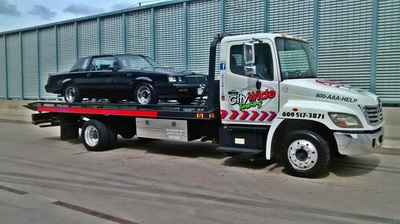Towing Your Used Car Is As Straightforward As Having A Toll Call
Do you know what it's like to have a whining kid grumping along behind you in the grocery store? Ever wished to get rid of one at the butcher's counter? You'll feel just the very same about a trailer. Loaded well, it's an enjoyment to pull. Loaded terribly, you may wish you 'd never ever got hitched.
First, the trailer must be hitched correctly. Connect the cup-like end of the trailer draw bar to the tow ball of your car. Some will fit straight over the ball. Others will have a handle on top which must be pulled upwards (and often turned) prior to being decreased onto the ball. There'll be a chain hanging from the trailer drawbar. Making sure that the chain isn't tangled, secure it directly to the cars and truck tow bar (usually using a D-shackle). This is your extra security needs to the major coupling break. Some automobile drawbars have a spring-loaded coupling through which the chain can be connected.

A D-shackle is formed like a D. Unscrew the bolt in the straight side. Pass the D through the chain and around the hole in the drawbar (with the non-threaded side upwards. Screw the bolt downwards through the leading shackle hole, through the drawbar and into the lower threaded hole of the shackle. Hand tighten up. (Do not screw the bolt upwards through the shackle and drawbar. It is most likely to reverse in transportation.).
Link the electrical cable and plug on the trailer to the lights connection on your automobile. Then, make sure your trailer lights are synchronised with your cars and truck indicator lights.
Constantly position a heavy load (bricks, sand or piano (!)) in the middle of your trailer, over the primary axle or axles. This will keep the trailer well balanced. If placed at the front of the trailer, a heavy load will tip your trailer down in front, put weight on the drawbar and pull your car down at the rear, making it groan like a constipated hippo. A heavy load on the back of the trailer will raise the draw bar, and the back of your cars and truck, so the car's wheels will lose traction.
Ensure your vehicle is able to pull the load safely. The weight of the trailer and the load (standard trailers have to do with 240-250 kg) ought to be less than the rated weight of your tow bar. If you're considering pulling an extremely heavy load, speak with the retailer for advice on relative weights. If there is any doubt, carry a smaller sized load or hire a truck. Inspect the internet for your regional requirements.
When you're connecting posts onto a trailer, bear in mind that the load will tend to move on if you stop suddenly. Load soft product in between products of furniture to stop them rubbing against each other in transit, and secure them from rope burns with rolled-up paper or old towels. Place the heaviest items in the centre. Position the much heavier items at the bottom if you have to stack your load. Check your roadway code for permitted limitations if any part of your load overhangs the length of the trailer. Attach a rag or moving challenge the overhanging part to make certain the overhanging part is visible to following traffic.
Cover the load with a tarpaulin and after that cover that with a bungy net pulled tight Home page to the trailer hooks. Make sure that no part of the load or the tarpaulin is covering the trailer lights. If you're bring your favourite furniture, cover the tops with fabric, before you use the tarpaulin, to safeguard it from the sandpaper result of motion of the tarpaulin in transit. If the load is made up of little particles, such as plant clippings, sawdust or firewood, you're required to cover it with a tarpaulin under the bungy internet to prevent particles flying into following lorries.
